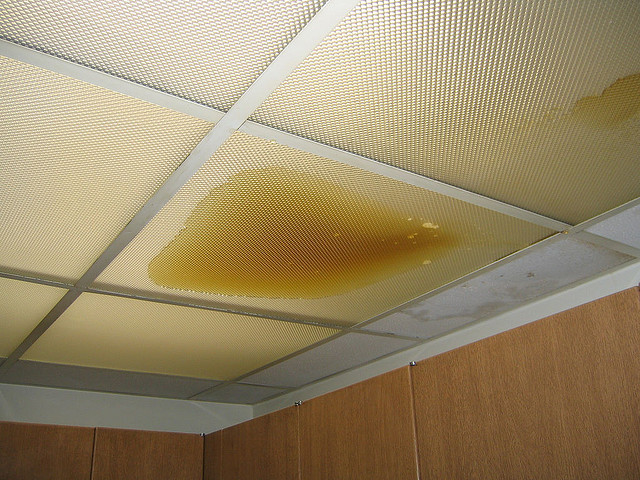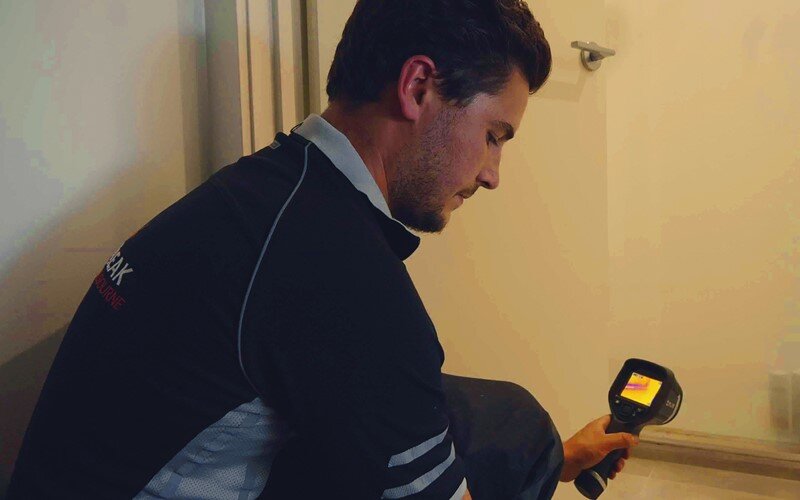They are making a few great pointers on the subject of Top leak detection hacks in general in this article further down.

Early detection of leaking water lines can alleviate a possible disaster. Some tiny water leaks may not be visible.
1. Take A Look At the Water Meter
Every residence has a water meter. Examining it is a proven way that helps you find leaks. For starters, shut off all the water resources. Make sure no person will certainly purge, make use of the tap, shower, run the cleaning maker or dish washer. From there, most likely to the meter and also watch if it will certainly transform. Given that no person is using it, there should be no movements. That shows a fast-moving leakage if it relocates. If you find no modifications, wait an hour or two and check back once more. This means you might have a sluggish leak that could even be underground.
2. Examine Water Consumption
Examine your water expenses and track your water consumption. As the one paying it, you must notice if there are any type of inconsistencies. If you detect sudden changes, despite your intake being the same, it suggests that you have leaks in your plumbing system. Keep in mind, your water costs need to fall under the exact same variety every month. An unexpected spike in your bill suggests a fast-moving leak.
At the same time, a consistent increase on a monthly basis, even with the very same practices, reveals you have a sluggish leakage that's also gradually escalating. Call a plumber to thoroughly inspect your home, specifically if you feel a warm location on your flooring with piping underneath.
3. Do a Food Coloring Test
30% comes from toilets when it comes to water usage. Examination to see if they are running properly. Decrease flecks of food shade in the container and wait 10 minutes. There's a leak between the storage tank as well as dish if the shade in some way infiltrates your dish throughout that time without flushing.
4. Asses Outside Lines
Do not fail to remember to check your outdoor water lines also. Must water leak out of the connection, you have a loose rubber gasket. One little leakage can squander loads of water and increase your water costs.
5. Examine the situation and evaluate
House owners ought to make it a habit to examine under the sink counters as well as even inside closets for any type of bad odor or mold development. These two warnings suggest a leak so punctual attention is called for. Doing routine inspections, also bi-annually, can save you from a significant problem.
Inspect for discolorations as well as compromising as a lot of pipes as well as home appliances have a life span. If you believe leaking water lines in your plumbing system, do not wait for it to rise.
Early discovery of leaking water lines can minimize a potential catastrophe. Some little water leaks may not be noticeable. Examining it is a proven way that assists you uncover leakages. One little leak can squander heaps of water and also increase your water bill.
If you think leaking water lines in your plumbing system, don't wait for it to escalate.
WARNING SIGNS OF WATER LEAKAGE BEHIND THE WALL
PERSISTENT MUSTY ODORS
As water slowly drips from a leaky pipe inside the wall, flooring and sheetrock stay damp and develop an odor similar to wet cardboard. It generates a musty smell that can help you find hidden leaks.
MOLD IN UNUSUAL AREAS
Mold usually grows in wet areas like kitchens, baths and laundry rooms. If you spot the stuff on walls or baseboards in other rooms of the house, it’s a good indicator of undetected water leaks.
STAINS THAT GROW
When mold thrives around a leaky pipe, it sometimes takes hold on the inside surface of the affected wall. A growing stain on otherwise clean sheetrock is often your sign of a hidden plumbing problem.
PEELING OR BUBBLING WALLPAPER / PAINT
This clue is easy to miss in rooms that don’t get much use. When you see wallpaper separating along seams or paint bubbling or flaking off the wall, blame sheetrock that stays wet because of an undetected leak.
BUCKLED CEILINGS AND STAINED FLOORS
If ceilings or floors in bathrooms, kitchens or laundry areas develop structural problems, don’t rule out constant damp inside the walls. Wet sheetrock can affect adjacent framing, flooring and ceilings.
https://www.servicemasterbyzaba.com/blog/how-to-detect-water-leakage-in-walls/

I recently found that article about Finding hidden leaks when scouting around the web. For those who appreciated our blog entry if you please make sure you remember to share it. Thank you so much for taking the time to read it.